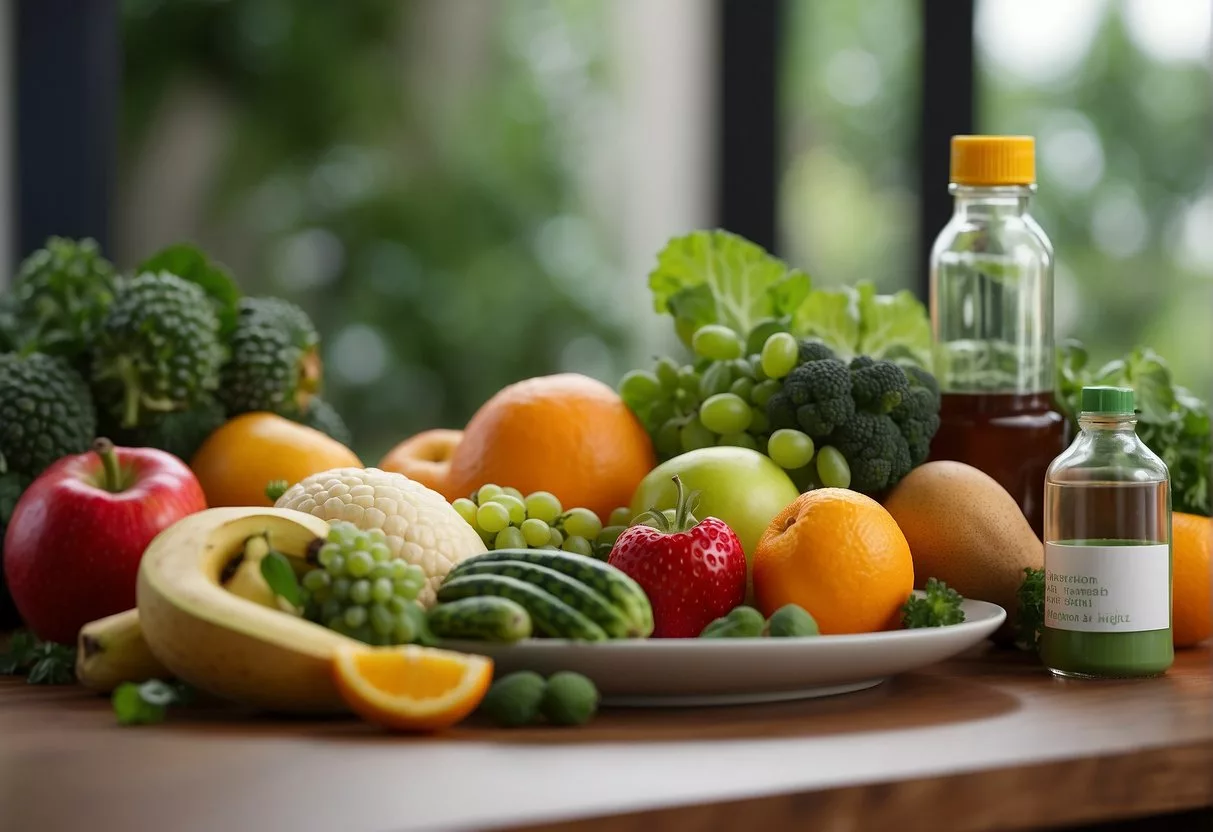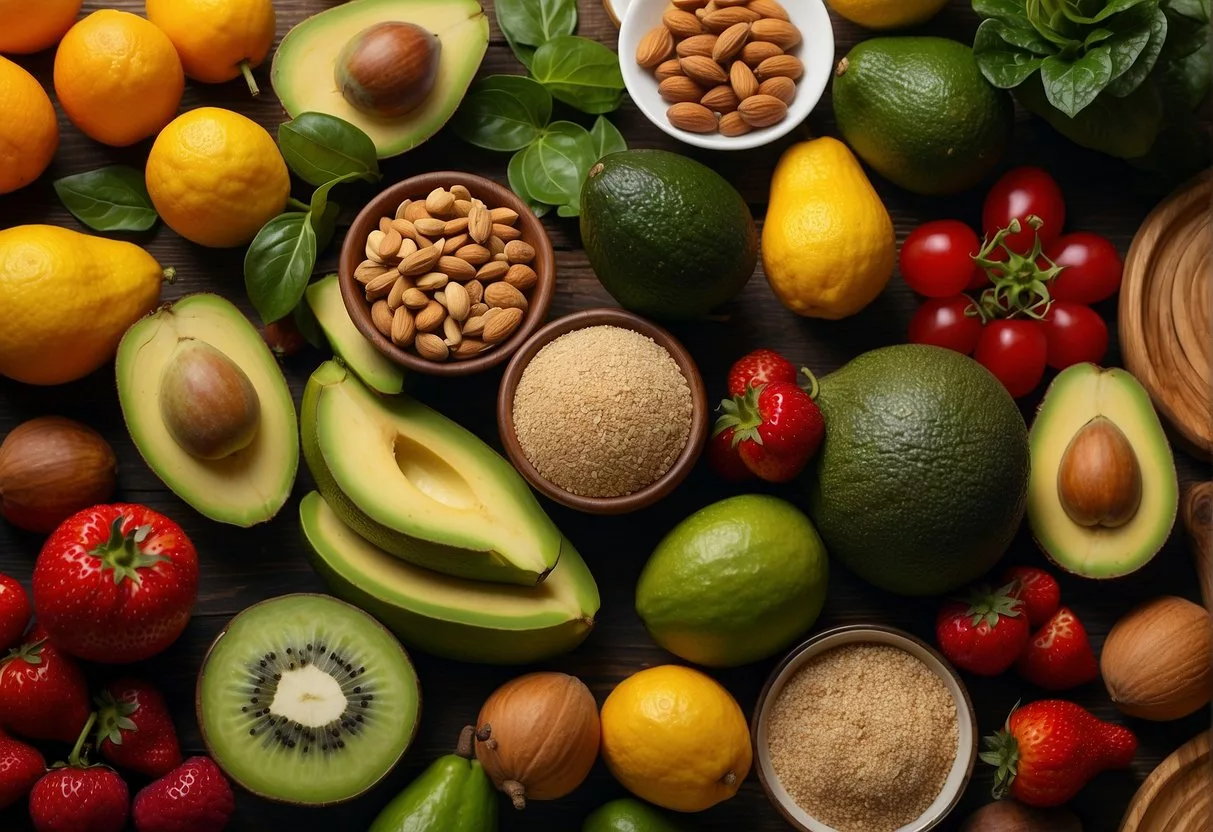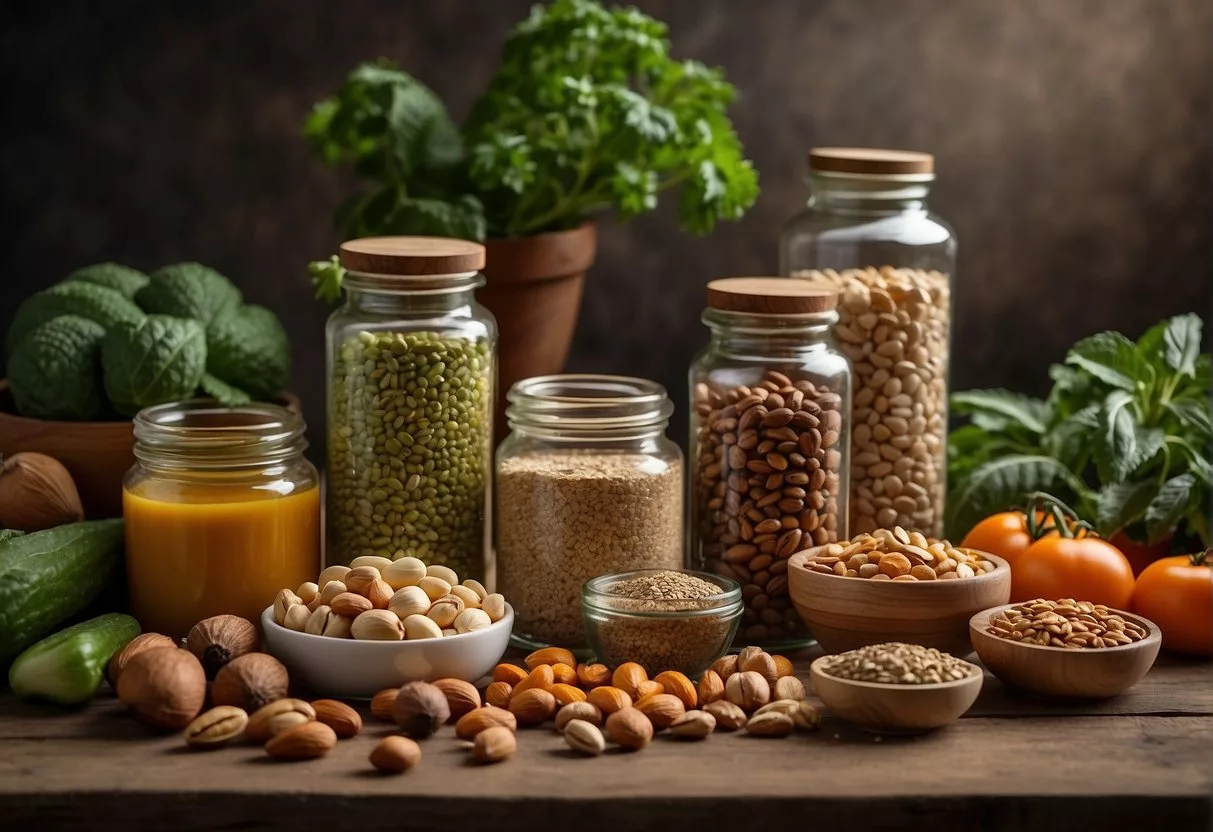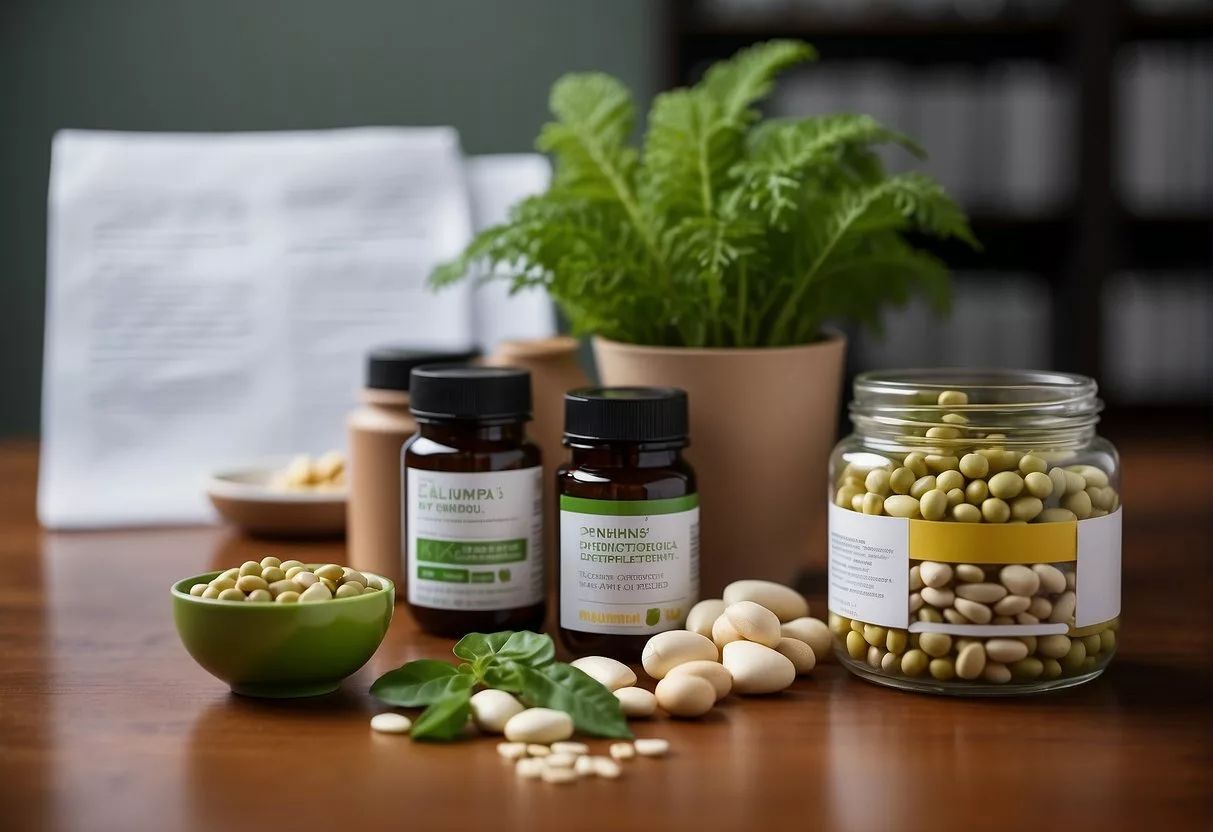Plant sterols are natural substances found in small quantities in many fruits, vegetables, nuts, seeds, cereals, legumes, and vegetable oils. These compounds have a similar structure to that of cholesterol, which is essential to human health but can be harmful in excessive amounts.
While cholesterol is necessary for building cell membranes and producing hormones, having high levels in the blood is a well-established risk factor for heart disease. Plant sterols, on the other hand, have been shown to help manage cholesterol levels, offering a dietary means of supporting heart health.
In managing cholesterol, plant sterols come into play by mimicking cholesterol in the digestive system, reducing its absorption into the bloodstream. This results in the body drawing from its cholesterol reserves, thereby lowering the total and LDL cholesterol levels. For individuals looking to manage their cholesterol through diet, the incorporation of plant sterols can be an appealing strategy. They may be consumed naturally through a well-balanced diet or may be added to certain foods or taken as dietary supplements as part of a targeted approach to cholesterol management.
Key Takeaways
-
- Plant sterols can mimic cholesterol, reducing its intestinal absorption and lowering blood levels.
-
- Incorporating plant sterols into the diet can support heart health by managing cholesterol levels.
-
- Plant sterols can be consumed through whole foods or supplementation as part of a cholesterol-lowering strategy.
Cholesterol and Health

Cholesterol is a substance found in the blood, important for healthy cells but potentially harmful when levels are imbalanced. This section explores the types and functions of cholesterol, as well as their impact on health.
Types and Functions of Cholesterol
Low-Density Lipoprotein (LDL) cholesterol is often labeled as ‘bad’ cholesterol because high levels can lead to plaque buildup in arteries, increasing the risk of cardiovascular disease. In contrast, High-Density Lipoprotein (HDL) cholesterol is considered ‘good’ because it helps remove other forms of cholesterol from the bloodstream.
-
- LDL cholesterol: Contributes to plaque, which can clog arteries and increase the risk of heart attack and stroke.
-
- HDL cholesterol: Helps transport cholesterol to the liver for removal from the body.
Triglycerides are another form of blood fat that can increase the risk of heart disease when levels are high. They typically rise from consuming more calories than the body needs.
Cholesterol Levels and Health
Having high cholesterol levels, particularly high LDL and low HDL, can lead to a buildup of plaques in arteries, termed atherosclerosis, which increases the risk of heart attack and stroke.
-
- Optimal cholesterol levels:
-
- LDL cholesterol: Less than 100mg/dL
-
- HDL cholesterol: 60mg/dL or higher
-
- Triglycerides: Less than 150mg/dL
-
- Optimal cholesterol levels:
People may use dietary supplements and make dietary changes to manage cholesterol levels. A balanced diet including plant sterols can help maintain healthy cholesterol levels, as these compounds can lower LDL cholesterol without affecting HDL cholesterol or triglycerides.
Basics of Plant Sterols and Stanols

Plant sterols and stanols are essential in managing cholesterol levels. They are naturally occurring substances found in plants that can help reduce the absorption of cholesterol in the digestive system.
Chemical Structure and Sources
Phytosterols are a group of naturally occurring compounds found in plant cell membranes. The structure of phytosterols is similar to that of cholesterol, but with differences that are critical in their function. For example, beta-sitosterol, campesterol, and stigmasterol feature variations in the side chain. Plant stanols, such as sitostanol and campestanol, are saturated derivatives of these sterols. Common sources of phytosterols include vegetable oils, nuts, seeds, legumes, vegetables, and fruits.
Types of Plant Sterols and Stanols
There are various types of plant sterols and stanols, including:
-
- Beta-sitosterol: Widely found in several plant-based foods, playing a role in reducing cholesterol levels.
-
- Campesterol: Mostly found in vegetable oils and several plant-based foods.
-
- Stigmasterol: Common in vegetable oils and some medicinal plants.
-
- Stanol esters: Created when plant stanols are esterified with fatty acids, these compounds are often added to foods like margarine.
Comparison with Cholesterol
Phytosterols and cholesterol have similar molecular structures, which allows phytosterols to block the absorption of cholesterol within the digestive tract. Because of this, phytosterols, including plant sterol and stanol esters, can be used to lower low-density lipoprotein (LDL) cholesterol, commonly known as ‘bad’ cholesterol. While both substances share similarities in structure, their effects on heart health are quite different, with phytosterols providing a beneficial impact.
Health Benefits of Plant Sterols

Plant sterols are recognized for their role in managing cholesterol levels and reducing the risk of heart disease. These natural compounds found in plants are structurally similar to cholesterol and can significantly impact heart health.
Impact on Cholesterol Levels
Plant sterols can lower low-density lipoprotein (LDL) cholesterol, commonly known as ‘bad’ cholesterol, by competing with cholesterol for absorption in the digestive system. Studies suggest that consuming at least 2 grams of plant sterols daily can reduce LDL cholesterol levels (LDL-C) by around 10%. Foods such as cereals and whole grains can be fortified with plant sterols, making it easier to include them in a balanced diet.
Reduction of Heart Disease Risk
By lowering LDL-C, plant sterols contribute to a lower risk of developing cardiovascular disease and atherosclerosis, conditions that can lead to heart attacks and strokes. The habitual intake of plant sterols as part of a diet low in saturated fat and cholesterol may impede the progression of heart disease by reducing the accumulation of cholesterol in the arteries.
Dietary Sources and Supplementation
In managing cholesterol, one can incorporate plant sterols through natural foods, fortified products, and supplements. The choice between these sources depends on individual dietary preferences and health goals.

Natural Food Sources
Plant sterols are found naturally in several types of foods. The primary contributors include vegetable oils, nuts, and seeds, which are not only rich in phytosterols but also contribute valuable nutrients to a healthy diet. Whole grains like wheat and wheat germ also contain these compounds. Additionally, vegetables are a source of plant sterols, thus integrating them into meals can enhance a cholesterol-lowering diet.
Fortified Foods and Functional Foods
To help individuals meet their daily intake of plant sterols, certain fortified foods and functional foods have been developed. These include margarines, cheese, milk, orange juice, and yogurt. The consumption of products such as plant sterol-enriched margarine is a convenient way to increase intake without significantly altering one’s diet. Bread fortified with plant sterols is another option for seamlessly incorporating these compounds into a daily routine.
Supplement Forms and Usage
For some, supplements or dietary supplements provide a direct and controlled means to increase plant sterol intake. These supplements are typically available in capsule or tablet form. When choosing a supplement, it’s essential to seek out reputable brands that adhere to quality standards and dosage recommendations. Proper usage often involves taking these supplements with meals to optimize the cholesterol control benefits, as part of a broader cholesterol-lowering plan.
Influence of Lifestyle Factors

Lifestyle factors play a crucial role in managing cholesterol levels. A multi-faceted approach that includes dietary modifications, physical activity, and weight management contributes significantly to cardiovascular health.
A Healthy Diet Beyond Sterols and Stanols
Adopting a healthy diet is fundamental to lowering cholesterol and goes hand-in-hand with the intake of plant sterols and stanols. An effective diet includes a variety of foods that support heart health.
-
- Fiber: Incorporating a variety of fiber-rich foods, such as whole grains, fruits, and vegetables, is essential. Fiber helps reduce the absorption of cholesterol into the bloodstream.
-
- Fats: Limiting saturated fats found in meats and full-fat dairy products while including monounsaturated fats, found in olive oil and avocados, helps improve cholesterol profiles.
-
- Fish: The inclusion of fish high in omega-3 fatty acids, like salmon and mackerel, contributes to heart health.
-
- Calories: Monitoring calorie intake is important to prevent and reduce obesity—a factor that significantly impacts cholesterol levels.
Physical Activity and Weight Management
Regular exercise and maintaining a healthy weight are key components of a lifestyle aimed at managing cholesterol.
-
- Activity Levels: Adults should aim for at least 150 minutes of moderate-intensity aerobic exercise per week. Children should engage in physical activities that are age-appropriate and fun to encourage lifelong habits.
-
- Weight Control: Reducing excess body weight can help decrease cholesterol levels and the risk of developing heart disease. Even a modest weight loss can have a positive impact.
-
- Age Considerations: It is never too late to become active. Physical activity is beneficial at any age and should be adjusted to one’s capabilities and health status.
Risks and Considerations
While plant sterols are effective in managing cholesterol, there are potential side effects and drug interactions that should be considered. Special populations may also need to consult with a healthcare professional before using these compounds.

Potential Side Effects
Plant sterols are generally considered safe for most people; however, they can cause gastrointestinal discomfort, including nausea, constipation, or diarrhea. In rare cases, individuals with the condition sitosterolemia, a genetic disorder, should avoid plant sterols due to the risk of accumulating plant sterols in tissues, which can lead to premature coronary artery disease.
Interactions with Medications
The usage of plant sterols may interact with certain medications. Specifically, statins and ezetimibe, medications commonly prescribed for dyslipidemia, can have their effects altered when used concurrently with plant sterols. It is imperative to consult with a doctor before combining plant sterols with these medications to manage serum lipid levels.
-
- Statins (such as rosuvastatin): The cholesterol-lowering effects can be enhanced, requiring dosage adjustments.
-
- Ezetimibe: Can also have its lipid-lowering effects impacted by plant sterols.
Considerations for Special Populations
Certain groups require careful monitoring when consuming plant sterols:
-
- Individuals with familial hypercholesterolemia: While they may benefit from the additional LDL-cholesterol lowering, a doctor’s guidance is crucial.
-
- Those with fat-soluble vitamin deficiencies: Plant sterols can reduce the absorption of these vitamins, necessitating close monitoring.
-
- People with diabetes: Although plant sterols can help in managing cholesterol, they should be used cautiously under medical supervision.
-
- Patients with history of or susceptibility to cancer: Must consult a healthcare professional, as there is some debate around the impact of plant sterols on cancer risk.
In all cases, professional medical advice is strongly recommended to avoid any unforeseen complications and to ensure safety and effectiveness in managing cholesterol levels with plant sterols.
Scientific Evidence and Guidelines

Plant sterols are recognized for their role in managing cholesterol levels, with evidence supported by clinical studies and acknowledged by official dietary guidelines.
Clinical Studies and Meta-Analyses
Clinical research on plant sterols shows they can be effective in lowering low-density lipoprotein (LDL) cholesterol, according to a meta-analysis of 41 trials, where a daily intake of 2g of plant sterols or stanols was associated with a reduction in LDL cholesterol by approximately 10%. These findings have been supported by further evidence from randomized, double-blind, placebo-controlled trials, which serve as the gold standard for clinical research due to their ability to minimize bias.
For a deeper understanding, another meta-analysis, which incorporated 124 randomized trials with 9600 adults, revealed that plant sterols and stanols can lower LDL cholesterol by 6-12% with an intake of 0.6-3.3g/day. This dose-response relationship highlights the efficacy of plant sterols and stanols in cholesterol management.
Official Dietary Guidelines and Recommendations
The American Heart Association (AHA) recognizes foods containing plant stanol and sterol esters as part of a heart-healthy diet for individuals with high cholesterol. Meanwhile, the U.S. Food and Drug Administration (FDA) permits health claims on foods containing at least 0.65g per serving of plant sterol esters or 1.7g per serving of plant stanol esters, regarding their association with reduced risk of coronary heart disease.
In accordance with the National Cholesterol Education Program (NCEP), the inclusion of plant sterol and stanol-enriched foods is recommended as part of therapeutic dietary strategies to enhance LDL cholesterol lowering. These guidelines and recommendations reflect a consensus on the benefits of plant sterols based on substantial scientific evidence.
Mechanisms of Action

Plant sterols play a crucial role in the management of cholesterol levels by interacting with the body’s mechanisms for cholesterol absorption and metabolism. Their structure is similar to cholesterol, which allows them to effectively compete for absorption in the digestive system, leading to lower levels of cholesterol in the bloodstream.
Intestinal Absorption and Transport
Plant sterols are known to inhibit the absorption of cholesterol in the intestine. They integrate into micelles, which are complexes essential for the absorption of lipids, and diminish the uptake of cholesterol by enterocytes, the absorptive cells in the small intestine. This competition with dietary cholesterol results in a decrease in cholesterol entering the body’s circulation, thus reducing overall cholesterol levels.
The efficacy of plant sterols is well-documented, with data showing a lowering of LDL-cholesterol, the type of cholesterol often called ‘bad’ because it can lead to buildup in the arteries, escalating risk factors for cardiovascular diseases.
Effect on Liver and Lipoprotein Metabolism
By decreasing the intestinal absorption of cholesterol, plant sterols indirectly affect the liver, the central organ for lipid and lipoprotein metabolism. With less dietary cholesterol entering the liver, it responds by upregulating LDL receptors, thereby pulling more LDL-cholesterol out of the bloodstream. This process leads to a reduction in circulating LDL-cholesterol and a minor decrease in VLDL levels, contributing to the lowering of blood pressure and the associated risks with high blood pressure.
Frequently Asked Questions

In this section, we address common inquiries regarding the consumption of plant sterols, their potential side effects, safe intake guidelines, food sources, effective dosages, and their role in cholesterol management compared to traditional medications like statins.
How fast do plant sterols work?
Plant sterols and stanols work relatively quickly to lower LDL cholesterol levels. The full LDL-cholesterol-lowering effect can be detected after daily consumption of 2 grams of plant stanols for two weeks [3]. Most evidence suggests that significant cholesterol reduction, up to 9%, can be observed within four weeks of consuming 2 grams of plant sterols or stanols daily [5][6].
What are the potential side effects of consuming plant sterols?
While plant sterols are generally considered safe, some individuals may experience mild digestive issues. Overconsumption may contribute to fat-soluble vitamin absorption issues.
Can consuming plant sterols cause liver damage?
There is no significant evidence to suggest that consuming plant sterols in moderation causes liver damage. However, as with any dietary changes, those with pre-existing liver conditions should consult with a healthcare provider.
How can one safely intake 2 grams of plant sterols per day?
Intake of 2 grams per day can be achieved by consuming foods fortified with plant sterols and stanols, such as certain spreads, juices, or yogurt, as recommended in a study summary by Mayo Clinic Proceedings.
Which foods are rich in plant sterols and stanols?
Foods rich in plant sterols and stanols include vegetable oils, nuts, seeds, whole grains, and legumes. Some products are specially fortified with sterols or stanols for an additional boost.
What is the most effective dosage of plant sterols for reducing cholesterol levels?
An effective dosage for reducing LDL cholesterol levels is 2 grams per day, shown to yield a reduction of about 10%, which is highlighted by the Cleveland Clinic.
Are plant sterols a viable alternative to statins for cholesterol management?
Plant sterols can be a complementary approach to statins but aren’t typically an alternative for those with high cholesterol levels. Lifestyle changes and medication, as prescribed, should be prioritized.